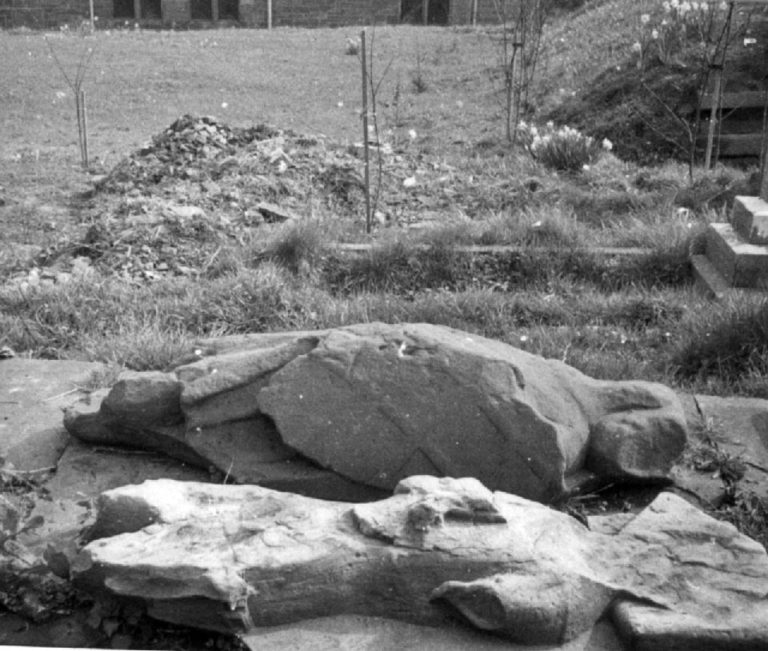Effigies at the Priory
This is a description of the stones on public display in the History Area of the Priory in the south aisle. The History Area was created in the 1970’s to bring together the many stones scattered around the Priory This constitutes the best group of medieval and earlier sculpture in West Cumbria. The grave slabs show a variety of styles, and as was common, used images to convey whom they commemorate.
There are three interesting effigies, some stones with inscriptions, and other interesting stones, like the “Green Monk”.
Each stone tells a tale……….
Lapidarium
General view of the Lapidarium with the St. Bees Man shroud display case in the foreground. On the ground are the two effigies, the cresset stone and the Irton slab.
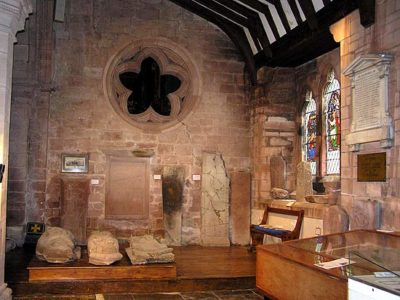
Three Medieval Effigies
There are three stone medieval effigies on display in the History area. They have been collected together on a raised platform built in 2009.
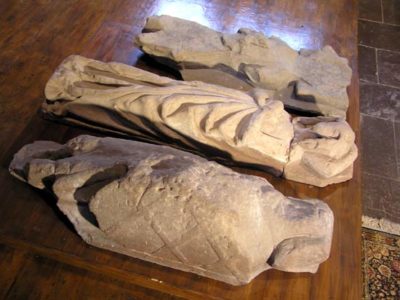
Effigy of Woman unknown
Effigy of what was thought to be have been that of Maud de Lucy is shown below as found during archaeological excavation in 1981 under the Old College Hall after being under four feet of rubble for four hundred years. .
She wears a widow’s veil, with traces under her chin of a “barbe” or band of linen. Her full long-sleeved dress is gathered up to the crook of her right arm. Her hands are on her breast in the usual attitude of prayer. There is a dog at her feet, possibly indicating fidelity. The effigy is broken at the neck and the face has been mutilated.
Recent expert opinion has indicated that the effigy is not of the correct syle of dress to match the date of death of Maud de Lucy.
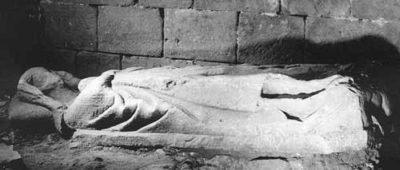
Maud de Lucy arms
In the belfry is a fragment of Maud de Lucy’s arms. She had the quartered arms created when she married Sir Henry Percy. The stone was used in the repair of the tower, possibly in 1611, and is rotated in this view to its correct orientation.
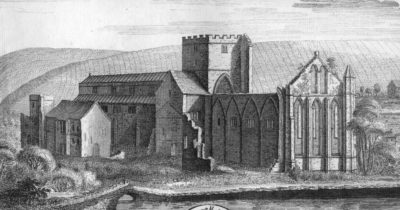
Effigy of a knight – 13th century
This is much mutilated, and clues are few. The “Fretty” diagonal marks on the shield are the best clue to the origin. Five Cumberland families had this device, and this effigy is probably of a member of the Hudleston or Harrington families. The armour is chain-mail.
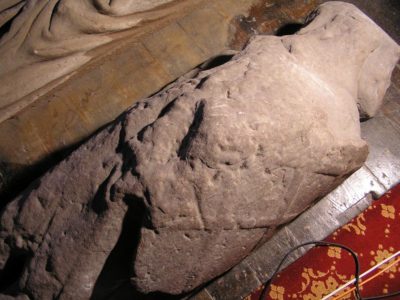
Effigy of a knight – Probably Anthony de Lucy.
On the basis of armour dating, and process of elimination of likely candidates, is it most likely that this was the effigy of Anthony de Lucy, died 1368 also known as the “St Bees Man”.
The effigy mouldings under one edge, incating that it was once on a sarcophagus.
Both male effigies were brought down from the churchyard in 1981, where they had been put on an unrelated vault for convenience in the 1800’s.
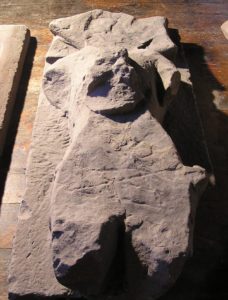
Context of the effigies – Buck’s view
It is likely the male effigies described here are those shown on the Buck’s view of 1739. Maud de Lucy’s effigy was buried under rubble in the roofless chancel.
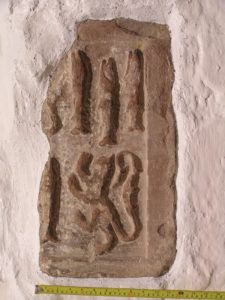
The effigies when in the graveyard
Removed from the graveyard in the 1980’s
